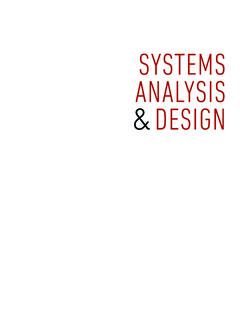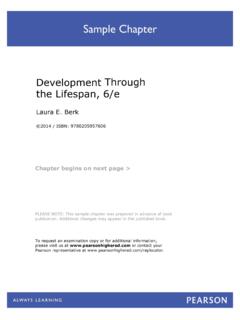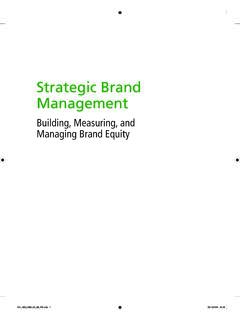Transcription of Principles of Microeconomics - Pearson
1 Principles of MicroeconomicsTHIRTEENTH 112/6/18 3:25 212/6/18 3:25 AMPrinciples of MicroeconomicsTHIRTEENTH EDITIONKarl E. CaseWellesley CollegeRay C. FairYale UniversitySharon M. OsterYale 312/6/18 3:25 AMVice President, Business, Economics, and UK Courseware: Donna BattistaDirector of Portfolio Management: Adrienne D AmbrosioSpecialist Portfolio Manager: David AlexanderEditorial Assistant: Nicole NedwidekVice President, Product Marketing: Roxanne McCarleySenior Product Marketer: Carlie MarvelProduct Marketing Assistant: Marianela SilvestriManager of Field Marketing, Business Publishing: Adam GoldsteinField Marketing Manager: Ashley BryanVice President, Production and Digital Studio, Arts and Business: Etain O'DeaDirector, Production and Digital Studio, Business and Economics: Ashley SantoraManaging Producer, Business: Alison Kalil Content Producer: Carolyn PhilipsOperations Specialist: Carol MelvilleDesign Lead: Kathryn FootManager, Learning Tools: Brian SuretteSenior Learning Tools Strategist.
2 Emily Biberger Managing Producer, Digital Studio and GLP: James BatemanManaging Producer, Digital Studio: Diane LombardoDigital Studio Producer: Melissa Honig Digital Studio Producer: Alana ColesDigital Content Team Lead: Noel Lotz Digital Content Project Lead: Noel Lotz Full Service Project Management: Jennifer Gavigan, Integra Software ServicesInterior Design: Integra Software Services, Design: Integra Software Services, Art: Integra Software Services, : LSC Communications, Printer: LSC Communications, 2020, 2017, 2014 by Pearson Education, Inc. or its affiliates. All Rights Reserved. Manufactured in the United States of America. This publication is protected by copyright, and permission should be obtained from the publisher prior to any prohibited reproduction, storage in a retrieval system, or transmission in any form or by any means, electronic, mechanical, photocopying, recording, or otherwise.
3 For information regarding permissions, request forms, and the appropriate contacts within the Pearson Education Global Rights and Permissions department, please visit of third-party content appear on page 495, which constitutes an extension of this copyright , ALWAYS LEARNING, and MYLAB are exclusive trademarks owned by Pearson Education, Inc. or its aff ili-ates in the and/or other otherwise indicated herein, any third-party trademarks, logos, or icons that may appear in this work are the property of their respective owners, and any references to third-party trademarks, logos, icons, or other trade dress are for demonstrative or descriptive purposes only. Such references are not intended to imply any sponsorship, endorse-ment, authorization, or promotion of Pearson s products by the owners of such marks, or any relationship between the owner and Pearson Education, Inc.
4 , or its aff iliates, authors, licensees, or of Congress Cataloging-in-Publication DataNames: Case, Karl E., author. | Fair, Ray C., author. | Oster, Sharon M., : Principles of Microeconomics / [Karl E. Case, Ray C. Fair, Sharon M. Oster].Description: [13th edition]. | Upper Saddle River, NJ : Pearson , [2019] | Includes : LCCN 2018018211 | ISBN 9780135162170 (softcover)Subjects: LCSH: : LCC HB172 .C36 2019 | DDC dc23LC record available at 10: 0-13-516217-3 ISBN 13: 978-0-13-516217-010 9 8 7 6 5 4 3 2 412/6/18 3:25 AMThis edition is dedicated to Chip Case, a wonderful colleague and friend. He was the inspiration for this textbook some 30 years ago, and he served as an inspiration to study economics for thousands of 512/6/18 3:25 AMKarl E. Case, who passed away in July, 2016, was a Professor of Economics Emeritus at Wellesley College where he taught for 34 years, serving several tours of duty as Department Chair.
5 He was a Senior Fellow at the Joint Center for Housing Studies at Harvard University and a founding partner in the real estate research f irm of Fiserv Case Shiller Weiss, which produces the S&P Case-Shiller Index of home prices. He served as a member of the Index Advisory Committee of Stan-dard and Poor s, and on the Academic Advisory Board of the Federal Reserve Bank of Case received his from Miami University in 1968, spent three years on active duty in the Army, and received his in Economics from Harvard University in Case s research was in the areas of real estate, housing, and public f inance. He authored or coauthored f ive books, including Principles of Economics, Economics and Tax Policy, and Property Taxation: The Need for Reform, and published numerous articles in professional journals, focused on real estate markets and , as he was known to his many friends and colleagues, contributed to this textbook throughout its many editions.
6 In his honor and with respect for his substantial contributions to the text and the discipline of economics, his co-authors plan to keep his name on the text for all future C. Fair is Professor of Economics at Yale University. He is a member of the Cowles Foundation at Yale and a Fellow of the Econometric Society. He received a in Economics from Fresno State College in 1964 and a in Economics from MIT in 1968. He taught at Princeton University from 1968 to 1974. Professor Fair has taught introductory and intermedi-ate macroeconomics at Yale since 1974. He has also taught graduate courses in macroeconomic theory and Fair s research has primarily been in the areas of macroeconomics and econometrics, with particular emphasis on macroeconometric model building. He has also done work in the areas of f inance, voting behavior, and aging in sports.
7 His publications in-clude Specif ication, Estimation, and Analysis of Macroeconometric Models (Harvard Press, 1984); Testing Macroeconometric Models (Harvard Press, 1994); Estimating How the Macroeconomy Works (Harvard Press, 2004), and Predicting Presidential Elections and Other Things (Stanford University Press, 2012).Professor Fair s and multicountry models are available for use on the Internet free of charge. The address is Many teachers have found that having students work with the model on the Internet is a useful complement to an introductory macroeconomics M. Oster is the Frederic Wolfe Professor of Economics and Management and former Dean of the Yale School of Management. Professor Oster joined Case and Fair as a coauthor in the ninth edition of this book. Professor Oster has a in Economics from Hofstra University and a in Economics from Harvard Oster s research is in the area of industrial organization.
8 She has worked on prob-lems of diffusion of innovation in a number of different industries, on the effect of regulations on business, and on competitive strategy. She has published a number of articles in these areas and is the author of several books, including Modern Competitive Analysis and The Strategic Management of Nonprof to joining the School of Management at Yale, Professor Oster taught for a number of years in Yale s Department of Economics. In the department, Professor Oster taught introduc-tory and intermediate Microeconomics to undergraduates as well as several graduate courses in industrial organization. Since 1982, Professor Oster has taught primarily in the Management School, where she teaches the core Microeconomics class for MBA students and a course in the area of competitive strategy. Professor Oster also consults widely for businesses and nonprof it organizations and has served on the boards of several publicly traded companies and nonprof it the Authorsvi 612/6/18 3:25 AMBrief ContentsPART I Introduction to Economics 1 1 The Scope and Method of Economics 1 2 The Economic Problem: Scarcity and Choice 23 3 Demand, Supply, and Market Equilibrium 43 4 Demand and Supply Applications 74 5 Elasticity 92 PART II The Market System 113 6 Household Behavior and Consumer Choice 116 7 The Production Process: The Behavior of Profit-Maximizing Firms 145 8 Short-Run Costs and Output Decisions 168 9 Long-Run Costs and Output Decisions 188 10 Input Demand: The Labor and Land Markets 212 11 Input Demand.
9 The Capital Market and the Investment Decision 228 12 General Equilibrium and the Efficiency of Perfect Competition 249 PART III Market Imperfections and the Role of Government 264 13 Monopoly and Antitrust Policy 264 14 Oligopoly 289 15 Monopolistic Competition 312 16 Externalities, Public Goods, and Common Resources 327 17 Uncertainty and Asymmetric Information 350 18 Income Distribution and Poverty 366 19 Public Finance: The Economics of Taxation 390 PART IV The World Economy 412 20 International Trade, Comparative Advantage, and Protectionism 412 21 Economic Growth in Developing Economies 436 PART V Methodology 453 22 Critical Thinking about Research 453 Glossary 468 Index 477 Photo Credits 712/6/18 3:25 AMContentsPART I Introduction to Economics 11 The Scope and Method of Economics 1 Why Study Economics?
10 2To Learn a Way of Thinking 2 ECONOMICS IN PRACTICE Rainfall and Schooling in India 3 ECONOMICS IN PRACTICE Majoring in Economics Makes You Less Vulnerable to a Recession! 4To Understand Society 4To Be an Informed Citizen 5 The Scope of Economics 5 Microeconomics and Macroeconomics 5 ECONOMICS IN PRACTICE iPod and the World 6 The Diverse Fields of Economics 7 The Method of Economics 8 Theories and Models 8 ECONOMICS IN PRACTICE Does Your Roommate Matter for Your Grades? 10 Economic Policy 10An Invitation 12 Economic Skills and Economics as a Career 12 Summary 12 Review Terms and Concepts 13 Problems 13 Appendix: How to Read and Understand Graphs 152 The Economic Problem: Scarcity and Choice 23 Scarcity, Choice, and Opportunity Cost 24 Scarcity and Choice in a One-Person Economy 24 Scarcity and Choice in an Economy of Two or More 25 ECONOMICS IN PRACTICE Frozen Foods and Opportunity Costs 26 The Production Possibility Frontier 29 The Economic Problem 35 ECONOMICS IN PRACTICE Trade-Offs among the Rich and Poor 36 Economic Systems and the Role of Government 36 Command Economies 36 Laissez-Faire Economies.

















